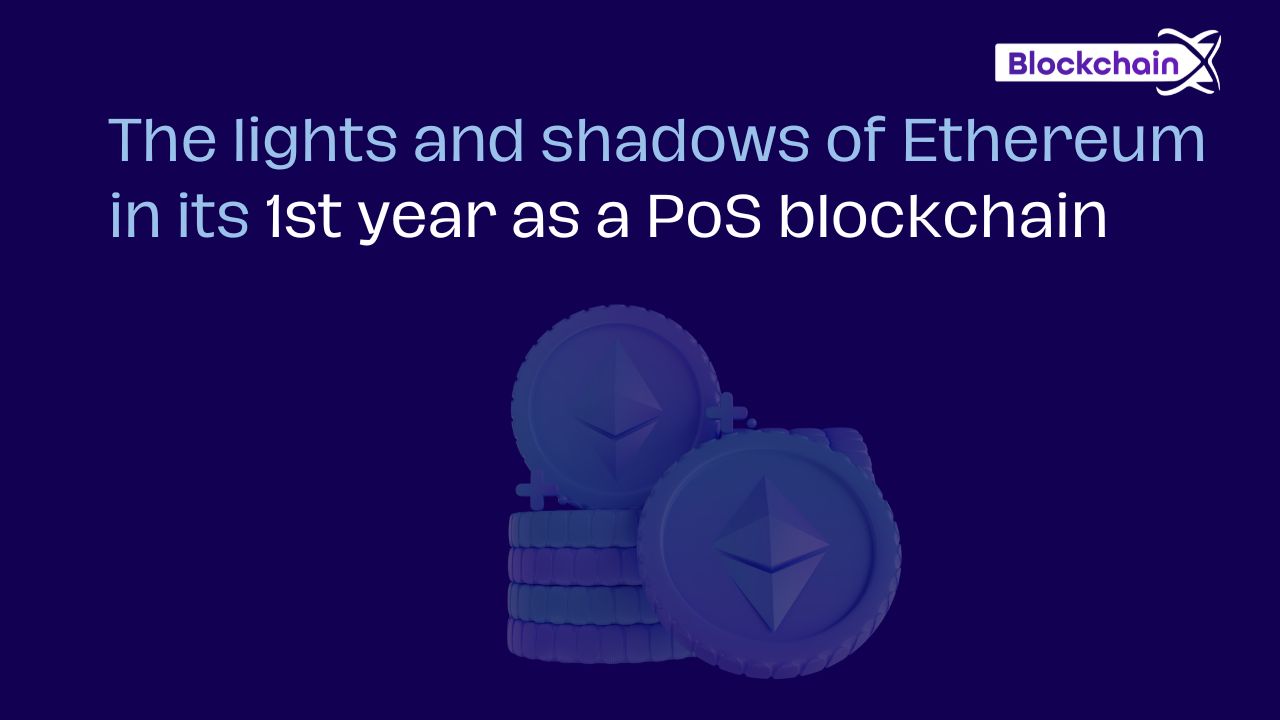The lights and shadows of Ethereum(ERC) in its 1st year as a PoS blockchain
 Deactivated User
Deactivated User
One year has passed since The Merge, the software update that made it possible for the Ethereum blockchain to switch from Proof of Work (PoW) to Proof of Stake (PoS).
The Merge has improved the network’s sustainability, efficiency, and security as it has celebrated its first birthday.
Since switching to PoS, Ethereum has consumed 99.95% less energy than before, making it a considerably more energy-efficient network. PoS has made it possible to run on a more regular schedule, ERC20 Token development , which makes it simpler to be more predictable in block production. At the same time, it makes it possible to create scaling solutions that will be essential to the project, such as rollups, sharding (also known as “danksharding”), and other advancements meant to keep Ethereum at the forefront of blockchain technology progress.
Ethereum PoS
We have been able to lay the groundwork for Ethereum to develop new versions that will enhance its functionality thanks to the Merge.
The Merge: A Comprehensive Roadmap
We can now begin a roadmap centred on the development of Ethereum 2.0 thanks to the Merge upgrade. The roadmap is broken down into three sections:
1. Phase 0: The Merge’s arrival and start-up. On September 15, 2022, erc20 was finished, and Ethereum switched from proof-of-work (PoW) to proof-of-stake (PoS).
2. Phase 1: For Ethereum to scale at a high level, it needs to be split up or sharded. This phase initially concentrated on employing a sharding implementation by network sub-layers (a group of fragmented networks or shard chains that connect a main network or main chain). They ultimately chose a danksharding system instead, which is a hybrid operating system that is simpler to install and uses Rollups and shards technology. The completion of this phase, which is now under way, is anticipated for the end of 2024.
3. Phase 2: The goal of statelessness is to increase the efficiency of Ethereum by removing the requirement for each node to hold the whole network state. This stage was recently brought up by Vitalik Buterin, who noted that cellphones might act as Ethereum nodes, decentralising the network in the process. This stage is necessary for the Buterin observation, which is anticipated to be finished in 2026.
Work in progress
There are additional projects that are being worked on as part of Ethereum 2.0 in addition to these three phases. Among all of these initiatives, the neighbourhood pays careful attention to the ideas of:
1. EIP-1559 — Will provide a fee burning mechanism that will aid in lowering ETH inflation.
2. Optimistic Rollups: These Layer 2 (Layer 2) scaling techniques can be utilised to improve Ethereum’s performance.
3. ZK Rollups are yet another Layer 2 scalability option that can be utilised to improve the privacy and scalability of Ethereum transactions. The development of the well-known Ethereum zkEVM, in which there have already been notable developments, will determine how this solution is implemented.
A growing ecosystem
On the other hand, The Merge has significantly boosted the Ethereum ERC20 development service community. On the one hand, staking and node statistics for Ethereum have dramatically increased. The information below, for instance, is quite pertinent:
1. The number of network validators in Ethereum has nearly doubled. the number of nodes increasing from 438 thousand in September 2022 to 748 thousand in September 2023.
2. The stake level has also been raised by 77%. Over 25.6 million ETH tokens have been staked as of today, up from 14 million in September 2022.
3. As of today, the Ethereum staking market is worth $42 billion. In September 2022, this figure amounted to less than 20 billion dollars. Although it also calls into question the stability and decentralization of the platform, given that LIDO, the largest staking player, controls more than 30% of the entire ecosystem.
4. Then again, the biological system of decentralized applications around Ethereum has extended fundamentally. Which has permitted us to keep a normal of around 340 thousand day to day dynamic clients, conveying multiple million savvy contracts on the organization, dispersed in excess of 400 thousand decentralized applications and a complete worth locked (TVL) of in excess of 70 billion Bucks.
More to come
Concerning development of this blockchain, Vitalik has said that Ethereum 2.0 isn’t yet finished and that the organization isn’t even 40% of what it is equipped for advertising. The guide and the local area reaction have denoted an excited ERC20 development speed of improvement inside Ethereum. A speed that should keep on being kept up with to keep up with second spot in significance inside the crypto biological system.
Particularly taking into account that Layer2 arrangements, like Polygon and Idealism, are improving and scaling in use quickly. Moreover, these Layer2 appear to be pointing towards making their own environments. Environments that could slowly uproot Ethereum as the fundamental advancement space.
Subscribe to my newsletter
Read articles from Deactivated User directly inside your inbox. Subscribe to the newsletter, and don't miss out.
Written by
